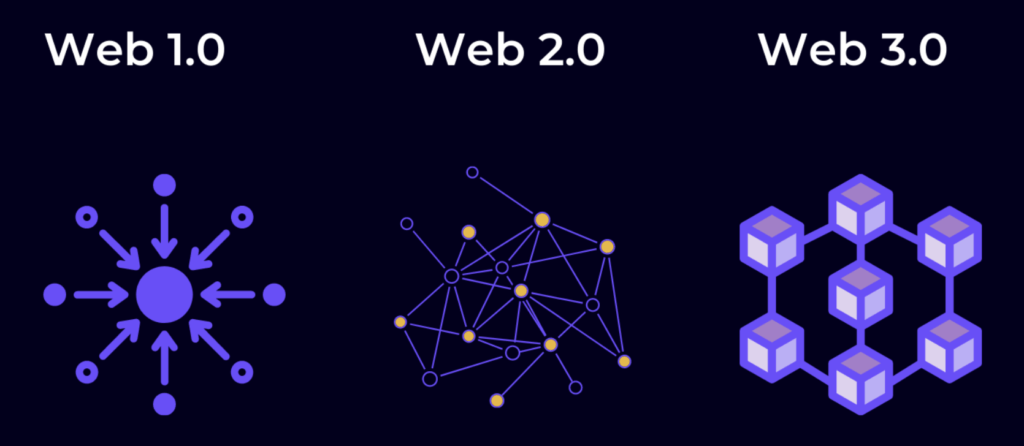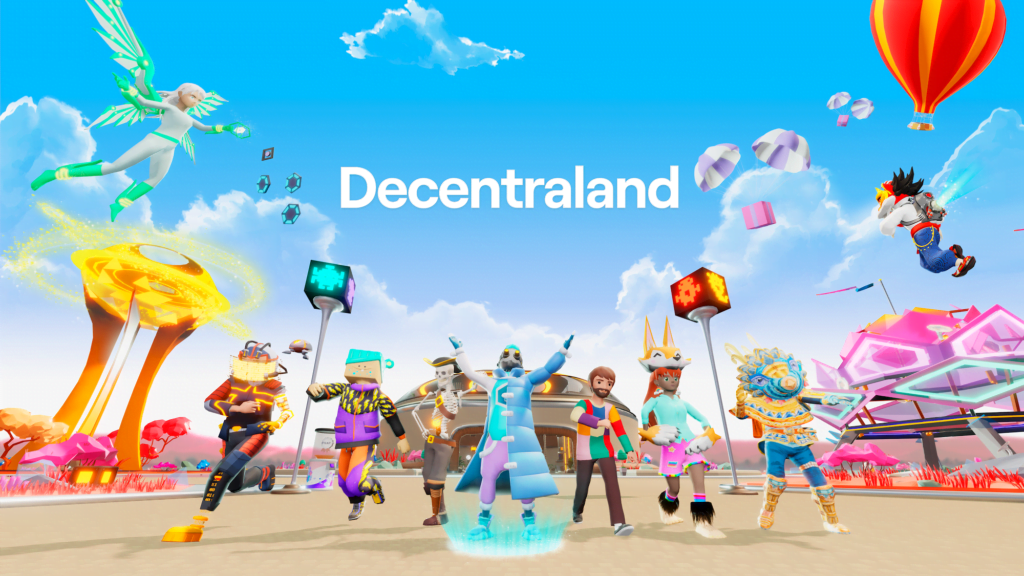In recent times, Web3 and the Metaverse have become buzzwords in the tech space and the hype is still gaining momentum. While Web3 and the Metaverse intertwine in various ways, they each represent different concepts. Read on to learn about what they are, how they’re different, and how they work together.
What is Web3?
Web3 is a new version of the internet using blockchain technology to make data more secure. Data is owned and controlled by the people who create it. This enables peer-to-peer transactions, decentralized communication, and unique digital identities.
In the beginning, Web1 started on content consumed by viewers in a non-interactive manner via blogs and websites constructed using an open protocol infrastructure (i.e. not owned by a company).
With Web2, big companies turned their attention to creating platforms where user-generated material and user-to-user connections could be shared. With an increasing number of people gaining access online, a select few organizations began monopolizing the traffic and value produced over the web.

In contrast, Web3 is a digital revolution sure to have us all in awe, as it combines the best of web1 and web2: open protocols and user-generated content. This technology utilizes blockchain infrastructure; granting users ownership over their own data while enabling them to exchange valuable asset tokens with ease.
For example, joining a social network these days means forfeiting personal data, for the purpose of creating an account and engaging with others. Social media corporations make money by using user information to create custom-made ads.
Therefore, Web3 empowers users to possess their data and monetize the content they create – taking away control from big corporations.
What is the Metaverse?
The term ‘Metaverse’ was first coined in Neal Stephenson’s 1992 novel, Snow Crash. The book is a dystopian sci-fi story set 30 years into the future, and it served as a major source of inspiration for Metaverse technology.
The Metaverse is an emerging, three-dimensional digital landscape that incorporates virtual reality and augmented reality technologies alongside more advanced internet components to offer life-like personal and corporate experiences online.
So, the Metaverse can be accessed from the comfort of your own home through a browser or headset. The Metaverse allows users to have real-time interactions with others no matter the distance between them. Of course, this creates a truly immersive experience for all involved.

Some Key Differences between Web3 and the Metaverse
Here are some key differences between Web3 and the Metaverse:
Objectives
Web3 is a new type of technology that wants to make the internet more fair and open for everyone. With Web3, people can be their own bosses and make their own rules.
On the other hand, the Metaverse is a virtual environment where people can interact with each other, build economies, and explore.
Applications
Web3 represents a revolutionary shift away from centralized corporate accounts to non-custodial crypto wallets. With blockchain access, users can take back control over their assets and use them however they want.
Metaverses can work to create whole new worlds – from healthcare, gaming, music, social media platforms, and education. All these applications are reliant on advances within Web3 tech to hit their goals!
Technology
Web3 is an innovative concept constructed around four core principles: decentralization, permissionlessness, direct payments, and trustless transactions. This unique combination of characteristics will enable the system to perform optimally and effortlessly.
Augmented Reality and Virtual Reality are integral in making the Metaverse a captivating virtual experience. These engines generate immersive, interactive three-dimensional worlds to enhance the user’s journey through the Metaverse.
Ownership
Web3 aims to break away from the oppressive reign of tech giants and instead open up the internet for public control. Web3 offers direct ownership through NFTs that no one – not even the developers – has control over. If you choose to take a break from playing a blockchain game, you can recover the value of any game assets you hold by trading or selling them on open markets.
NFTs, records of digital ownership stored in the blockchain, will serve as the cornerstone for a successful Metaverse economy by authenticating possessions, property, and even identity.

Web3 and the Metaverse – a match made in Decentraland
Web3 is providing the potential to construct digital worlds on decentralized networks. Decentraland, as an example, was developed using Ethereum blockchain technology.
So how does Web3 support the Decentraland Metaverse?
Decentraland is a virtual world which enables users to purchase and transact digital real estate in the form of NFTs. The platform also features interactive apps, in-world payments and peer-to-peer communication tools. Decentraland has become one of the most popular virtual worlds for exploring, and interacting with others in a Metaverse.
In virtual worlds that are not run by one central authority, smart contracts dictate governance. Smart contracts are rules that are written into the blockchain, and they are designed to execute autonomously. Users can vote and exercise democratic rights to influence how the Metaverse works.
Decentraland’s DAO functions as the ultimate governing force for MANA and LAND holders in its virtual universe. Through this powerful tool, the community can have a definitive say in how Decentraland is shaped!
Conclusion
By using cutting-edge technology, the Metaverse and Web3 will coexist together. Blockchain technology has made remarkable advances providing a solid foundation for both to build on and this yet-unknown future looks bright.
With every new blockchain concept that arises, we consider how Web3 can incorporate it. Even though this technology is still early on in its development journey – integrating these ideas now sets us up for an exciting future.
Author

Immersive tech enthusiast, diving into the NFT currents reshaping the Metaverse.




